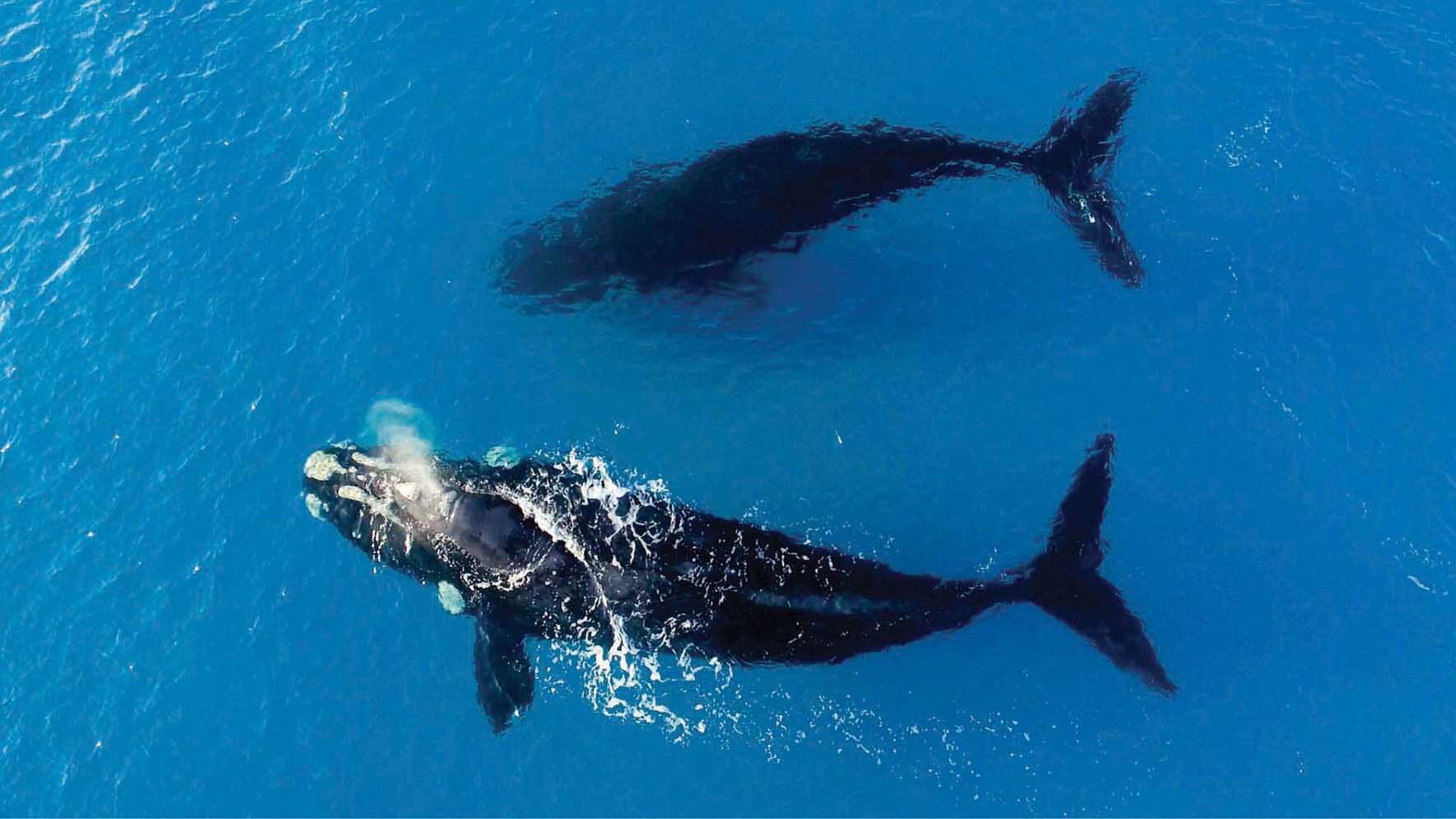southern right whale
Southern right whales are known as baleen whales as they use their specialised baleen plates to filter out food from the water. These ocean giants can weigh up to 135,000 kilograms and reach up to about 20 metres in length.
Right recovery
In the nineteenth century, whalers dubbed the southern “right” whale to hunt due to their slow swimming pace, plentiful oil and baleen content. Hunting them to the brink of extinction the whales numbers were drastically reduced almost to extinction where in the 1920s there were only about 300 left. Thanks to protection their numbers have recovered, they are still only at a population hovering around 10,000 as compared to 150,000 before whaling.
Unique features
Southern right whales can be distinguished from others by their broad back without a dorsal fin, wide pectoral fins, a long arching mouth that begins above the eye, two separate blow holes which produce a distinguishing V-shaped blow, and small rough patches of whitish skin on its head called callosities. The callosities are unique to each individual whale and appear white due to large colonies of whale lice. Researchers use them to identify individuals and study the population.
Image: Andrew Gould
Agile acrobats
These huge animals are slow swimmers, but highly acrobatic. They delight whale watchers by putting on a show performing “headstands” where they tip themselves upside down vertically or, sometimes, they will breach up to ten times in a row. They are commonly found in groups of two or three, but can live in groups as large as 12.
Image: Andrew Gould
Filter feeders
As migratory whales, Southern right’s live throughout the southern hemisphere moving between their warmer breeding waters to the colder, nutrient rich, waters where they feed, often around Antarctica. These docile creatures love to eat zooplankton and krill. To enjoy their meal they will swim slowly through clouds of these microorganisms with their mouths open halfway using their baleen plates like a strainer.
Artwork by Sarah Landry
Sex cells
The mating season in the southern hemisphere is from June to October. Unlike other mammal species, the southern right males do not compete aggressively for a female. Interestingly, competition occurs at a microscopic level whereby the male who is able to produce the most sperm will succeed in impregnating the female. During a single session, females can mate with up to seven males. Their gestation period lasts about a year. Once the calf is born they will grow quickly, doubling in size and within a year. In a safe ocean environment, these amazing mammals can live to be a hundred years old.
Image: African Wings
Fast Facts:
Family: Balaenidae (right whales and bowhead whales)
Order: Artiodactyla (even-toed ungulates)
Feeding: Zooplankton and krill
Habitat: Oceans in the southern hemisphere (migratory based on breeding and feeding)
Distribution: Southern hemisphere
Special Power: Supersized and fast growth rate
Image: Jaimen Hudson










